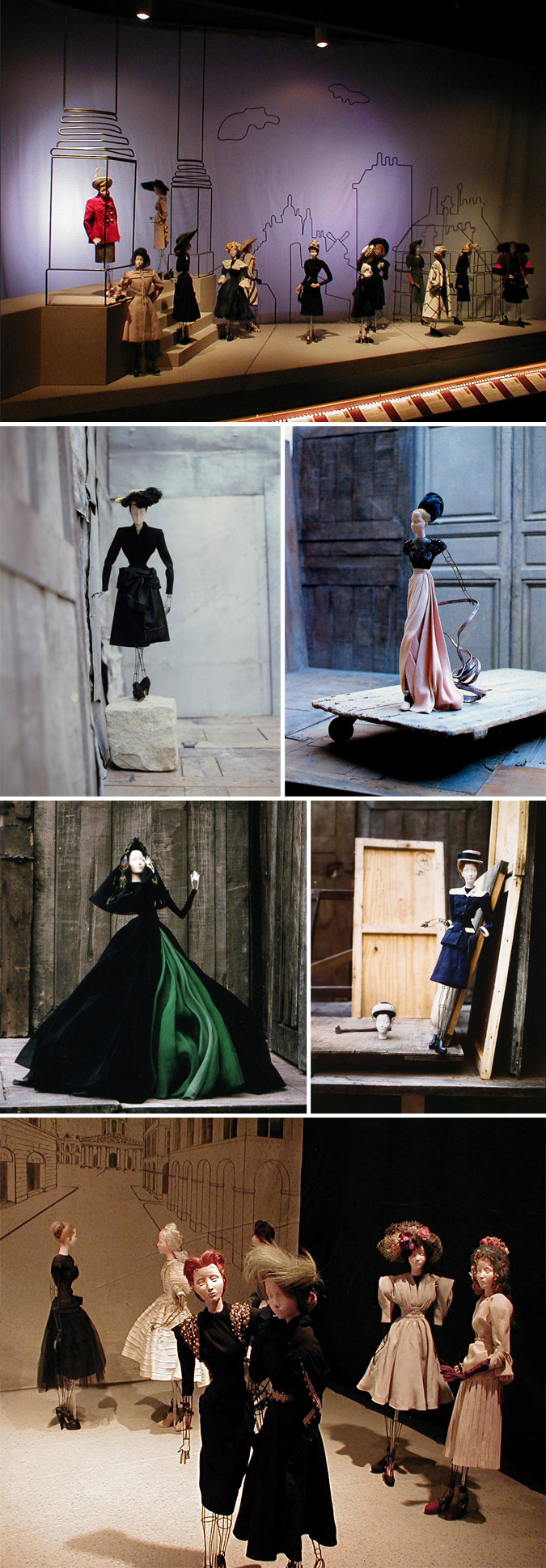
During the shortages of World War II haute couture fashion shows were a luxury in which no one could consider indulging. A few creative minds came up with an alternative...
"The idea for the Theatre de la Mode came from Robert Ricci, son of Nina, and the then head of the Chambre Syndicale, which was enlisted by Entraide Francaise to help raise funds for their work. Like the rest of Europe, Paris was suffering from severe shortages, and fabric was especially hard to come by. Rather than staging ‘real life’ fashion shows, which would have been almost impossible in these circumstances, the Chambre Syndicale decided to do everything in miniature, using mannequins on a 1:3 scale. This harked back to the old practice of sending dolls dressed in miniature versions of outfits to faraway buyers.
Made from wire (a salvaged material), with white, unpainted plaster heads, the mannequins were designed by Eliane Bonabel, an illustrator, and Joan Rebull, a Spanish sculptor. Fifty three design houses, including such well known names as Schiaparelli, Fath, Hermes, Ricci, Balenciaga, Worth, Lelong, Carven and Madame Gres, were given the task of creating up to five outfits each. The only difference between these clothes and those made for real people, was in their size; they had proper linings, closures, buttons and trimmings. Many were hand beaded, and designers often provided miniature foundation garments to go underneath. The couturiers were not the only artists who were involved. The mannequins’ wigs were all professionally made and styled, and each one wore a pair of beautifully scaled down shoes. Jewellery, little gloves, hats, purses, belts, and even little powder compacts had to be made." (source)
